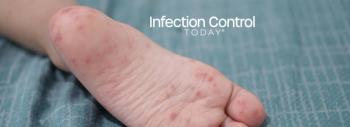
Researchers Develop Aerosolized Vaccine That Protects Against Ebola in Primate Model
A collaborative team from the University of Texas Medical Branch at Galveston and the National Institutes of Health have developed an inhalable vaccine that protects primates against Ebola. The findings were recently published in the Journal of Clinical Investigation.
Previous studies with primates suggest that aerosols of most biothreat agents, which are particles dispersed in the air, are infectious. Recent studies show that contact with the Ebola virus through the mucus membranes that line the respiratory tract results in infection, suggesting that airway linings may be important portals of entry for the virus. Aerosolized delivery has never before been tested for an Ebola vaccine or any other viral hemorrhagic fever vaccine.
"A needle-free, inhalable vaccine against Ebola presents certain advantages," says lead author Michelle Meyer, UTMB postdoctoral fellow in the department of pathology. "Immunization will not require trained medical personnel."
The study characterized the immune responses generated by vaccination against Ebola delivered to the respiratory tract as either an aerosol or liquid. Direct comparisons were made with an unrelated protective injectable Ebola vaccine. This included detailed comparisons between immune T cell responses in the lungs, spleen and blood. A single vaccination with the aerosol developed by the researchers protected non-human primates against the severe disease and death caused by lethal Ebola infection.
"This study demonstrates successful aerosol vaccination against a viral hemorrhagic fever for the first time," says virologist Alex Bukreyev, UTMB professor and a senior author. "A single-dose aerosol vaccine would enable both prevention and containment of Ebola infections, in a natural outbreak setting where healthcare infrastructure is lacking or during bioterrorism and biological warfare scenarios."
The findings of this study provide the basis for advancing this experimental vaccine to an NIH phase I clinical study. Pending approval through an Investigative New Drug Application, the aerosolized form of the vaccine will be evaluated for replication, safety and immunity development in a study in adults.
Other authors of this paper include UTMB's Tania Garron, Ndongala Lubaki, Chad Mire, Karla Fenton, Curtis Klages and Thomas Geisbert as well as Gene Olinger from the United States Army Institute for Infectious Diseases and Peter Collins from the National Institutes of Health.
This study was supported by the National Institutes of Health.
Source: University of Texas Medical Branch at Galveston
Newsletter
Stay prepared and protected with Infection Control Today's newsletter, delivering essential updates, best practices, and expert insights for infection preventionists.






